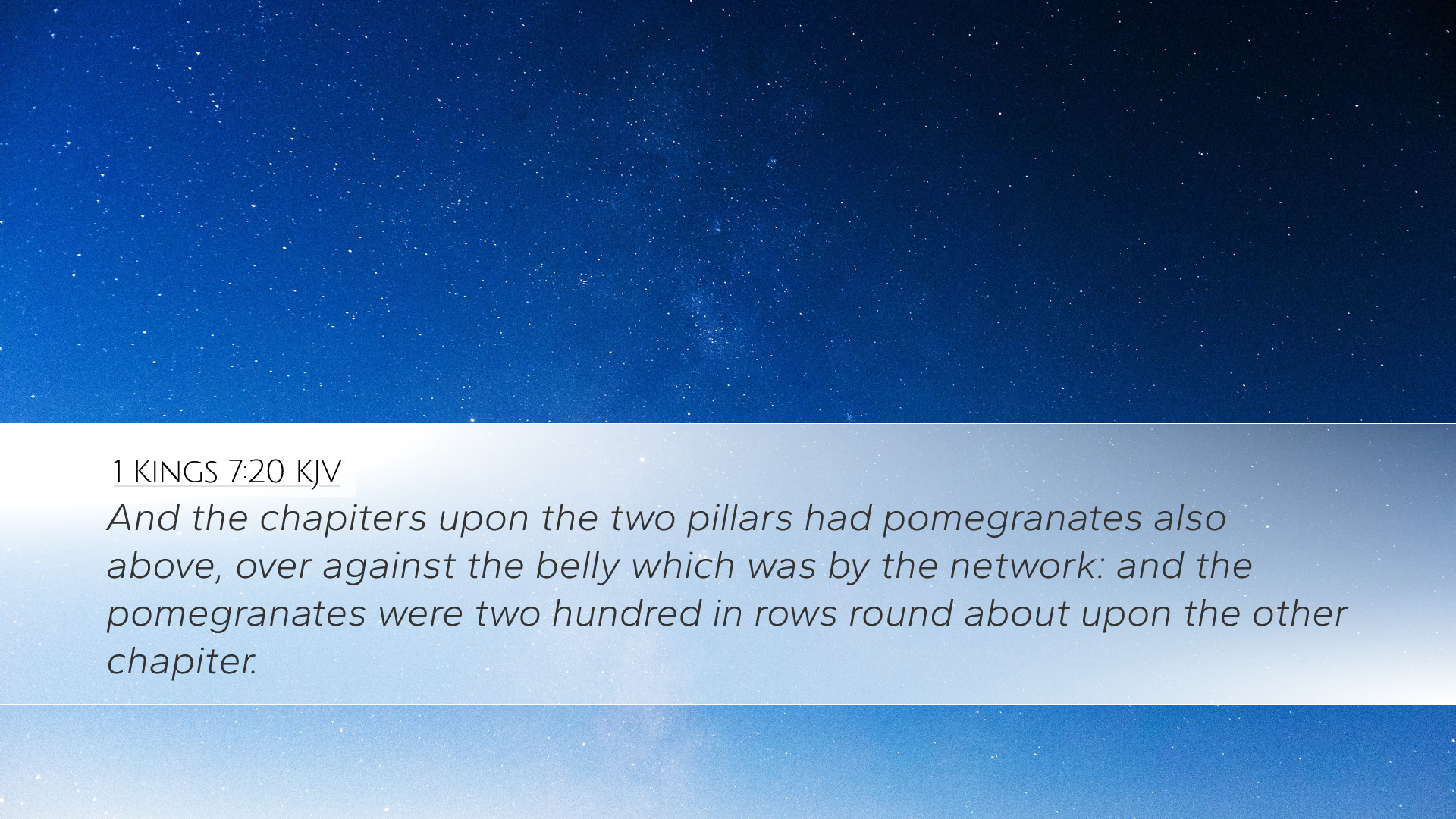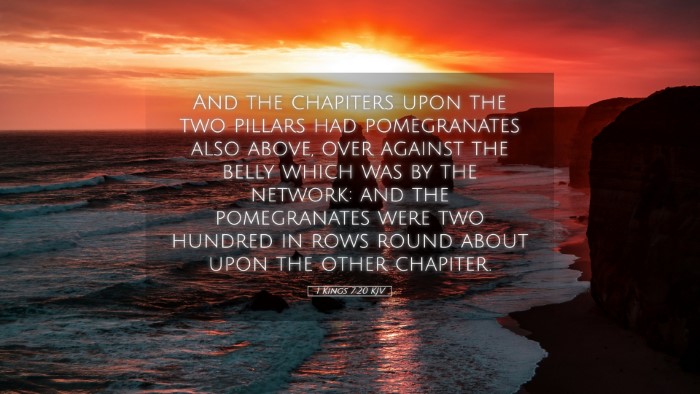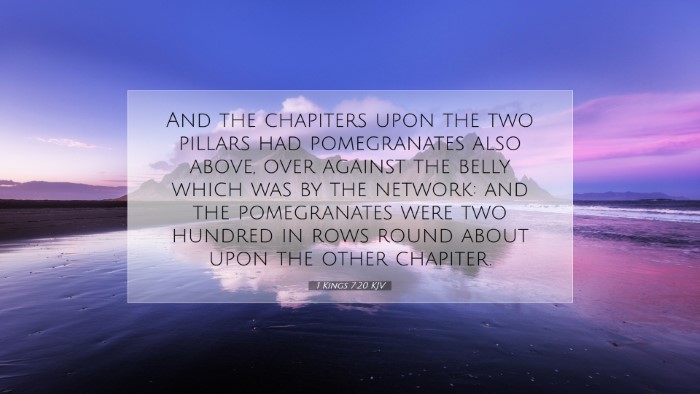Commentary on 1 Kings 7:20
Verse Text: "And the chapiters that were upon the two pillars had pomegranates also above, over against the belly which was by the network: and the pomegranates were two hundred in rows round about upon the chapiters."
Introduction
This verse describes an important element in the architecture of Solomon's temple, highlighting the decorative features that embody both artistic expression and theological significance. The mention of the chapiters adorned with pomegranates is rich with symbolic meaning, and the insights from respected theologians can deepen our understanding of this passage.
Architectural Significance
In this verse, we find descriptions that echo the grandeur and solemnity of the temple structure. The two pillars, named Jachin and Boaz, served not only as structural supports but also as symbolic representations of strength and stability, embodying the nature of God's covenant with His people.
- Matthew Henry notes that the pillars' chapiters illustrate the lavishness and meticulous attention to detail characteristic of Solomon's reign, emphasizing that God's house should reflect the worthiness of His majesty.
- Albert Barnes further elaborates on the function of the pillars, suggesting they symbolized a connection between heaven and earth, serving as a reminder of God's presence in the temple.
- Adam Clarke comments on the structural integrity, indicating that the design was not only for aesthetic pleasure but also practical expertise that allowed for the temple's vastness and glory to be showcased.
Symbolic Interpretations
The pomegranates feature prominently in the description, and both beauty and meaning are intertwined in their significance. The frequent use of pomegranates in biblical literature suggests deep religious connotations.
- Matthew Henry points out that pomegranates often symbolize fertility and abundance, reflecting God's blessings upon His people.
- Albert Barnes posits that the pomegranate is an emblem of the law and the prophets, reminding the Israelites of their covenant responsibilities and the fruitful results of abiding by God's commands.
- Adam Clarke suggests that the pomegranates may represent the righteous among the people of Israel, producing fruit and testifying to the goodness of God in their lives.
Structural Details of the Chapiters
The chapiters themselves, or the ornamental tops of the pillars, serve an essential purpose in this description. They are intricately designed, and the mention of “two hundred in rows round about” speaks to the precision and thought involved in their creation.
- Albert Barnes emphasizes that the arrangement in rows suggests order and harmony in God's creation, which is paralleled in the structured nature of worship in the temple.
- Matthew Henry underscores that the number of pomegranates, two hundred, may symbolize completeness—a fulfillment of God's promise to His people.
- Adam Clarke notes that the decorative elements served a dual purpose: admiration and reverence, pointing worshippers toward the divine beauty of the Lord they came to adore.
Theological Implications
Understanding 1 Kings 7:20 goes beyond architecture and artistry; it invites deeper theological reflection on what these elements convey about God and His relationship with humanity.
- Albert Barnes argues that the beauty of the temple, as reflected in the pillars and pomegranates, mirrors the beauty of Christ and His Church, with the temple serving as a foreshadowing of the ultimate fulfillment found in Jesus.
- Matthew Henry highlights that the attention to detail in the temple’s construction is reflective of God’s own character—He cares about the small details in the lives of His followers.
- Adam Clarke links the ornamental aspects of the temple to the believer's life, suggesting that just as the temple was adorned, so should believers adorn their lives with good works and holiness.
Conclusion
1 Kings 7:20 serves as a profound reminder of the beauty, order, and symbolism inherent in the temple's design, echoing the character of God and His relationship with His people. As pastors, students, theologians, and scholars reflect on this verse, they find not just a historical account of temple architecture but an invitation to comprehend deeper spiritual truths that remain relevant today. The insights provided by Matthew Henry, Albert Barnes, and Adam Clarke enrich our understanding, allowing us to appreciate the sacred nature of worship and the intentional design of God for His dwelling place among His people.


